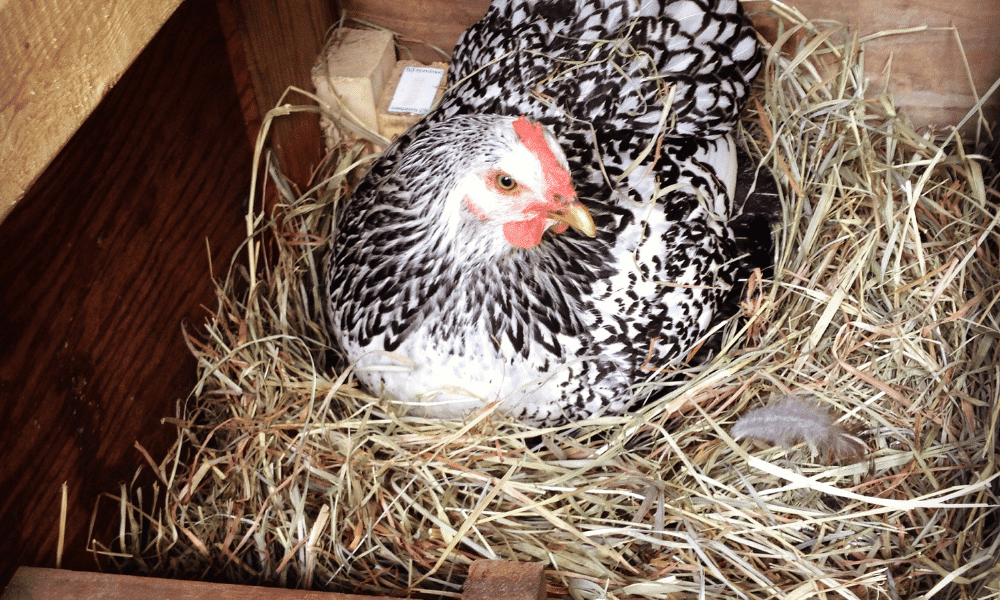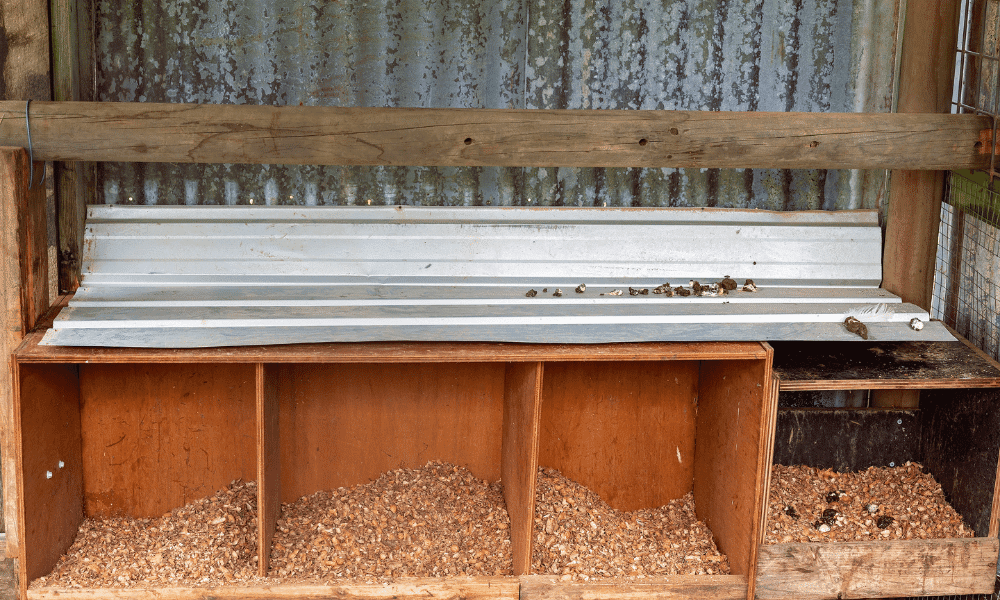Whether it’s your first time as a keeper, or you are simply adding more chickens to your flock, it’s essential that you provide enough for your chickens.
Otherwise, if you have a few broody hens then there will be no available when your other hens are ready to lay. This will either discourage your chickens to lay as frequently, as they want a safe and enclosed space to lay, or may cause your chickens to lay in other, less desirable places.
To put it simply, here is how many you need per — for every size flock.
Contents
?

Having the right amount of for your flock will make sure your chickens have adequate space to squat and lay their eggs, without taking up unnecessary space.
As a rule of thumb though, it’s always best to provide more than fewer. If you don’t provide enough your chickens will have to find elsewhere to lay or may be discouraged from producing as many eggs as they don’t have a comfortable laying environment.
How many you’ll need also depends on what breeds of you own, as the number of eggs each lays significantly differs between breeds. Take Red Rangers Vs. Isa Brown for example, which lay 170 vs. 310-350 respectively.
With these in consideration, it’s recommended to provide one for every 5 chickens, plus one extra to be safe, accounting for a or two!
How Many For 2-4 Chickens
If you’ve got a small flock of 2-4 chickens, then it’s perfectly reasonable to just provide one . However, if you have extra space in your it doesn’t hurt to set up a second one, just in case you’ve got a , or all your chickens want to lay at once!
The worst case is they won’t even use the second , but at least you’ve offered them the space.
How Many Needed For 5 Chickens
For five chickens it’s best to provide 2 . Although, if your chickens are good at sharing you can get away with just one, two will be sufficient space even if all your hens need to lay at the same time.
Some chickens will be in and out quicker than you can say “eggs”, whereas some chooks like to take their time. Two for 5 chickens will be perfect.
How Many Needed For 10 Chickens

Using the guidelines of one per 5 chickens, you should set up a minimum of two for a 10 flock. But, it’s recommended to provide an additional , so 3 in total, just in case all of your chickens decide they want to lay at the same time.
You can even provide more if you wish, but you’ll often find your chickens pick favorites and end up just sharing one or two.
How Many Needed For 20 Chickens
Twenty chickens are verging on being a large flock. So, with all that excitement in the it’s essential you provide adequate space for your hens to do their hardest work — laying their eggs.
For 20 chickens it’s recommended to provide 5 . Usually, your flock will pick a few that they favor and just use those ones, but you’ll find your chickens using each from time to time when there’s a queue or some of your hens turning broody!
How Many Needed For 50 Chickens

Fifty chickens are well and truly a large flock. But, just because you tend to such a large number of feathered friends doesn’t mean needs to get any harder!
Providing 10 will be suitable for 50 chickens. In fact, ten are plenty, but it’s always better to provide more than less — particularly if you’ve got yourself a large flock.
How Many Needed For 100 Chickens
When you have 100 chickens, you’ll definitely want to make sure you have enough . As hilarious as it is to find eggs in odd spaces in the or around the yard, you want to encourage your chickens to all lay in easy-to-access places — and preferably the !
So, it’s not out of the question to provide twenty for your 100 chickens. However, with this amount of chickens, your requirements will come down to how frequently your chickens lay, and what breed they are.
For example, If they are Isa Brown/Golden Comets or other hybrid chickens bred from , then you’ll certainly want 20 . But, if you house chickens that lay only half the amount of eggs, then you can reduce your required down to 10-15.
Remember though, more are always better than less if you have the space for them!
What If You Don’t Have Enough ?
If you don’t have enough for your flock then you better enjoy finding eggs in odd spots!
If a is currently occupying the , it’s true that your other chickens will try to find a safe, comfortable spot to . Although this is fine sometimes, the more often it happens, the more often you’ll miss out on finding the until it’s gone bad!
Further to this, if your chickens can’t find a safe spot to lay their eggs if all your are full for example, then they are more likely to reduce their
So, if you’ve just expanded your flock and don’t have enough to accommodate everyone, then it’s best you build a temporary make-shift in the meantime. A wooden or cardboard with bedding or pine needles will do – chickens aren’t fussy!
Creating A Desired Spot

Many owners, both new and experienced, find it challenging to attract chickens to the . I’m sure we’ve all dealt with that stubborn that keeps laying on the floor before!
So, when you’re setting up your , no matter what size flock you have, you always want to be sure it’s in a clean, quiet, and sheltered space.
Hens also prefer to lay above the ground, so placing your 1 or 2 feet from the floor will encourage them to lay there too.
If you’re really having trouble then placing fake eggs or golf balls in the can really help, I’ve had to do it for one of my silkies to finally get the picture!
Types And Sizes of
are available in many sizes and styles, including wooden, plastic, metal, and even roll-away boxes.
In my experience, the best boxes are wooden, as they absorb extra moisture and are sheltered and insulated fairly well.
As far as sizes go, a standard 12 x 12 x 12-inch normally works for all chickens. If you own larger breeds you can get 14 square inch boxes if required. Smaller breeds of chickens will still happily sit in a standard 12-inch though.
Quick Tips On Taking Care Of A
Collect Eggs Daily: Making a habit of collecting your eggs daily will mean fresher eggs, and fewer eggs being broken!
Use Good Bedding: Avoid using cheap bedding or any shavings that contain cedar, as it’s known to be toxic for chickens. Instead consider other , like wood shavings, pine needles, dry grass, or some types of hay.
Clean Regularly: Your chickens will be more encouraged to use their when they are clean. Also, by cleaning your regularly you will help keep the smelling good and allow you to collect more .
Use Friendly Herbs For Freshness (Optional): Although this is entirely up to you, you can use some herbs to keep your smelling fresh — without bothering your chickens. Try using Lavender, Basil, or Dill for a calming and herbaceous smell.
Encourage Your Chickens To Sleep Elsewhere: If your hens sleep in the then they are more likely to do their droppings in there overnight too! This not only makes things a bit messier but will also mean some of your hens won’t be able to use the occupied for their egg-laying! Try providing a ladder or roosting bars at an elevated height, as chickens like being off the ground overnight.
Wrap-Up
are an essential part of your , and having enough of them for your flock is essential for optimal and the wellbeing of your chickens.
Remember, it’s always better to provide more than fewer, even if your chickens don’t use them all the time. So, keeping this in mind, always try to follow the rule: one per 5 chickens, plus one extra just in case!
Keep them clean, use good bedding, and collect your eggs daily to keep your fresh and clean for your hens.
Happy backyard farming!
